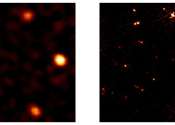Astronomers seek to explore the cosmic Dark Ages
No place seems safe from the prying eyes of inquisitive astronomers. They've traced the evolution of the universe back to the "Big Bang," the theoretical birth of the cosmos 13.7 billion years ago, but there's still a long ...








